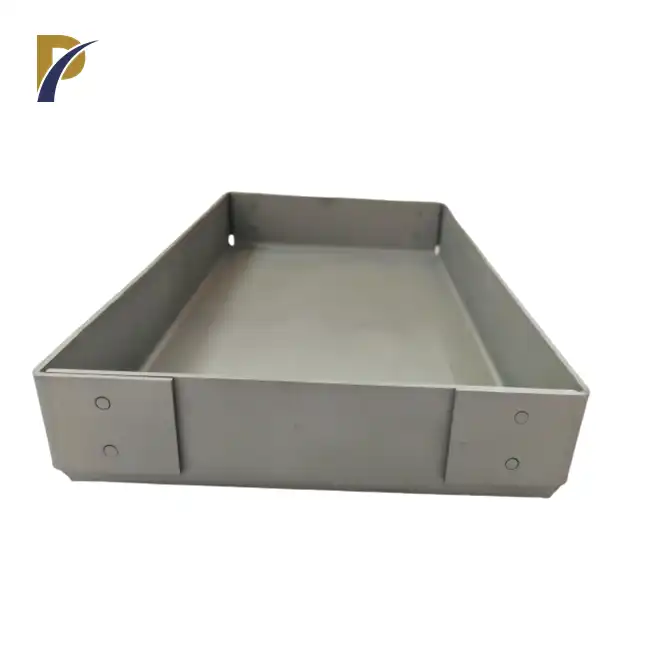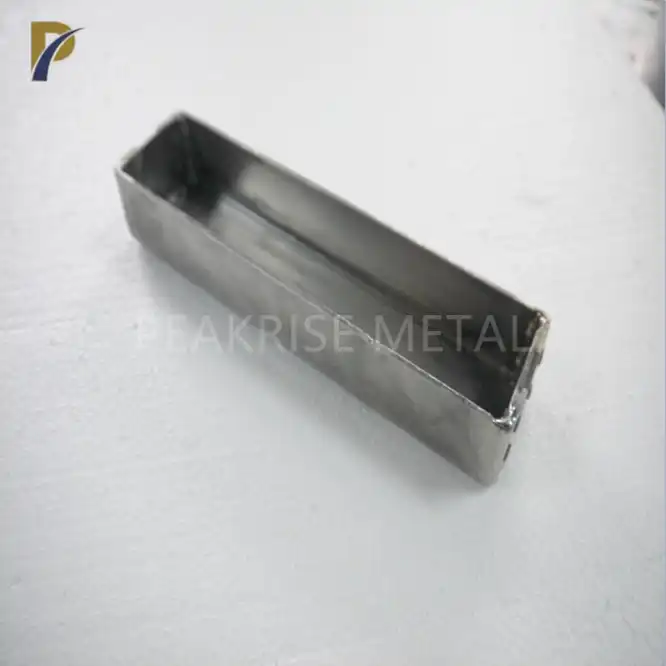Thermal Efficiency and Heat Distribution
Enhanced Heat Conductivity
Stretched molybdenum boats exhibit exceptional thermal conductivity, allowing for rapid and uniform heat distribution across their surface. This property ensures that heat is effectively transferred from the heat source to the materials placed within the boat. The enhanced heat conductivity of stretched molybdenum plays a pivotal role in various high-temperature processes, such as vapor deposition and sintering, where precise temperature control is essential. With uniform heat distribution, manufacturers can achieve more consistent processing conditions, resulting in improved product quality, increased efficiency, and reduced processing times, ultimately benefiting the overall manufacturing process.
Resistance to Thermal Shock
One of the standout features of stretched molybdenum boats is their remarkable resistance to thermal shock. The stretching process aligns the grain structure of the molybdenum material, enhancing its strength and ability to withstand rapid temperature fluctuations. This makes the material particularly durable in environments where boats are subjected to frequent heating and cooling cycles. The ability to endure these extreme conditions without warping or cracking is critical for maintaining the integrity and dimensional stability of the boats, ensuring that they can be reused multiple times without compromising performance, which significantly extends their service life.
Optimal Temperature Uniformity
The unique properties of stretched molybdenum contribute to exceptional temperature uniformity across the boat's surface. This uniformity is essential in processes requiring tight thermal control, such as the production of thin-film coatings or the growth of single crystals. By minimizing temperature gradients, stretched molybdenum boats prevent localized overheating or underheating, which could otherwise lead to defects or inconsistent product quality. Manufacturers can rely on this temperature consistency to achieve better control over the entire production process, reducing the occurrence of material defects and ultimately improving both product yield and quality.
Durability and Longevity in Harsh Environments
Corrosion Resistance
Stretched molybdenum boats boast superior corrosion resistance, making them ideal for use in aggressive chemical environments. The stretching process enhances the material's inherent resistance to acids, alkalis, and various corrosive gases, further improving its ability to withstand harsh conditions. This robust corrosion resistance allows manufacturers to use these boats in processes that involve reactive chemicals or corrosive atmospheres without risking degradation of the material. The boats maintain their structural integrity and ensure the purity of the processed materials, reducing the need for frequent replacements and improving overall cost-effectiveness in challenging environments.
 |
 |
High-Temperature Strength
One of the most significant advantages of using stretched molybdenum boats is their exceptional strength at elevated temperatures. The stretching process imparts a unique microstructure that allows the material to retain its mechanical properties even under extreme heat conditions. This high-temperature strength makes them ideal for applications in industries such as metallurgy and aerospace, where boats are subjected to high thermal loads. Unlike conventional materials, stretched molybdenum can support heavy loads without warping or failure, ensuring consistent performance and reliability in environments where temperatures would cause other materials to deform or lose strength.
Wear Resistance
The enhanced wear resistance of stretched molybdenum boats plays a key role in extending their service life in demanding manufacturing environments. The stretching process aligns the grain structure, creating a harder, more abrasion-resistant surface. This makes the boats particularly suitable for applications involving abrasive materials or frequent handling and loading cycles. Their ability to resist wear and erosion ensures that the boats maintain their shape and functionality over prolonged use, reducing the need for costly maintenance or replacements. This durability translates into lower operating costs and improved overall productivity in industries where equipment longevity is critical.
Precision and Consistency in Manufacturing Processes
Dimensional Stability
Stretched molybdenum boats exhibit exceptional dimensional stability, maintaining their shape and size even under extreme conditions. This stability is crucial for ensuring consistent product quality, especially in precision manufacturing processes. The ability of these boats to retain their form throughout repeated thermal cycles and under varying loads allows for more accurate control over production parameters, resulting in higher-quality outputs and reduced variability between production runs.
Contamination Prevention
The high purity and chemical inertness of stretched molybdenum make it an ideal material for preventing contamination in sensitive manufacturing processes. Unlike other materials that may release impurities or react with processed substances at high temperatures, stretched molybdenum boats remain stable and non-reactive. This characteristic is particularly valuable in industries such as semiconductor manufacturing, where even trace contaminants can significantly impact product performance and yield.
Uniform Material Distribution
The smooth, even surface of stretched molybdenum boats facilitates uniform distribution of materials during processing. This is especially important in applications such as powder metallurgy or the production of thin films, where consistent material distribution is crucial for achieving desired properties in the final product. The ability to maintain a level and stable surface throughout the manufacturing process contributes to improved product consistency and reduced waste, ultimately enhancing overall production efficiency.
Conclusion
The adoption of stretched molybdenum boats in manufacturing processes offers a multitude of benefits that can significantly enhance production efficiency, product quality, and operational longevity. From their superior thermal properties and exceptional durability to their ability to ensure precision and consistency in manufacturing processes, these innovative components have proven to be invaluable across various industries. By leveraging the unique advantages of stretched molybdenum boats, manufacturers can optimize their operations, reduce costs, and maintain a competitive edge in today's demanding production environments.
Contact Us
To learn more about how stretched molybdenum boats can benefit your manufacturing processes, or to explore our range of high-quality non-ferrous metal products, please don't hesitate to contact us. Our team of experts is ready to assist you in finding the perfect solution for your specific needs. Reach out to us at info@peakrisemetal.com and take the first step towards enhancing your manufacturing capabilities today.
